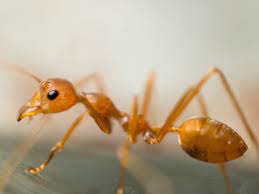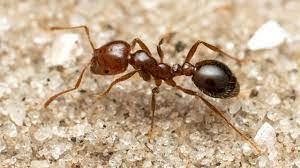Red fire ant colonies found in Italy and could spread across Europe, says study

Rome: An invasive non-native ant species has become established in Italy and could rapidly spread through Europe to the UK with global heating, a study warns.
The red fire ant, Solenopsis invicta, has a powerful sting, damages crops and can infest electrical equipment including cars and computers.
The ant, considered one of the most destructive invasive species, can rapidly form “super colonies” with multiple queens. The colonies prey on invertebrates, larger vertebrates and plants, destroying native plants and out-competing native ants, insects and herbivores for food.
The red fire ant is the fifth most costly invasive species in the world, spreading via human trade from its native South America into Mexico, the Caribbean, Australia and the US, where it causes an estimated damage of $6bn (£4.8bn) each year.

Researchers have identified 88 red fire ant nests across 5 hectares (12 acres) near the city of Syracuse, in Sicily, Italy. According to genetic analyses in a study published in Current Biology, the invasive colonies could have come from China or the US.
Roger Vila, the principal investigator at the Institute of Evolutionary Biology’s Butterfly Diversity and Evolution Lab, who led the study, said: “Coordinated efforts for early detection and rapid response in the region are essential to successfully manage this new threat, before it spreads uncontrollably.”
The charity Buglife said invasive ant species were easily spread when plants in soil are imported into Britain and called on the government to ban the import of soil.
The EU has banned the export of soil from the UK but the UK has not taken reciprocal measures to stop imports , mostly via the horticultural trade.
David Smith, of Buglife, said: “It’s an open door for non-native species that are soil-dwellers. There’s widespread concern about these non-native invasive ant species of which this is one of a handful which are on the cusp of making it into Europe.
“We can do something to stop these arriving but once an invasive ant species is here it’s going to be very hard to eradicate. Ants are notorious for being able to spread quickly.”
In Europe, the ant has previously been found in imported products in Spain, Finland and the Netherlands but its establishment in the wild on the continent has never before been confirmed.
While the EU has updated its “species of concern” list to include the red fire ant, the British government has not updated its list since Brexit despite calls from experts concerned about new invasive species.
Smith added: “We’re getting increasingly frustrated at government delays over biosecurity measures.”
Australia is spending A$400m (£205m) on the ant’s eradication but its government has been criticised for failing to act decisively enough to remove the species. New Zealand is the only country to have successfully eradicated the red fire ant after it appeared the country in 2001.
The red fire ant is a heat-loving species but the researchers concluded that it could establish itself in approximately 7% of Europe.
In today’s climate, half of the urban areas in Europe would be climatically suitable for it, including large cities such as London, Paris, Rome and Barcelona. With global heating, the continent will become much more suitable for the species and help its spread across Europe.
Mediterranean coastal cities are the most suitable to the ant, and their seaports could facilitate its spread.
Mattia Menchetti, the lead author of the study, said: “The public could play a key role in the detection of S invicta, considering that it is frequently found in urban and adjacent areas. It is possible to detect this ant due to its painful stings and the characteristic mounds of their nests, although confirmation of an expert is required.”
The Sicilian colonies are located in an estuary and natural park in the suburbs of Syracuse. Researchers believe wind-assisted flying queen ants arrived there from the port of Syracuse to the north-west. The team has recommended further monitoring of the port.





